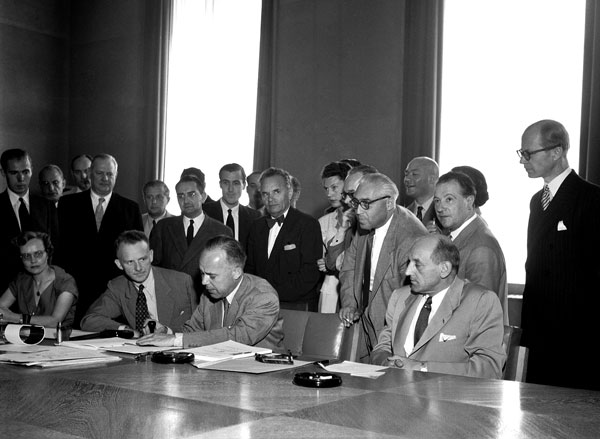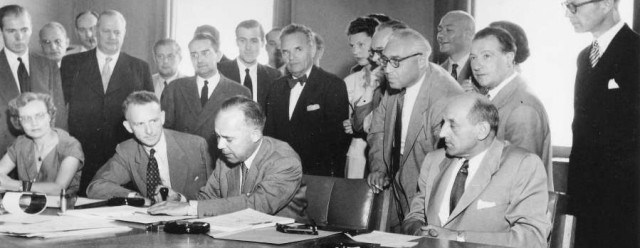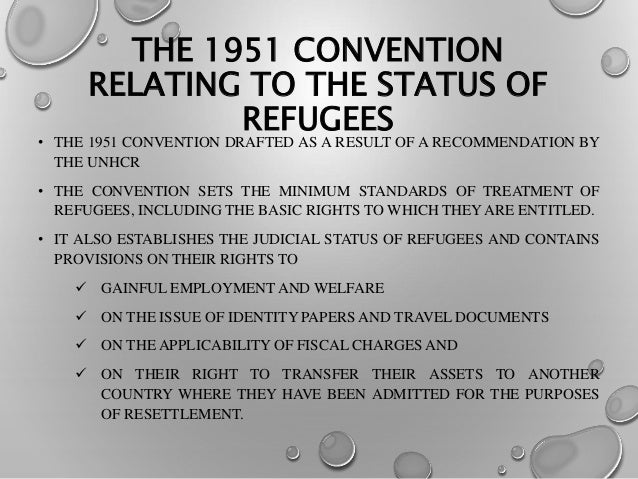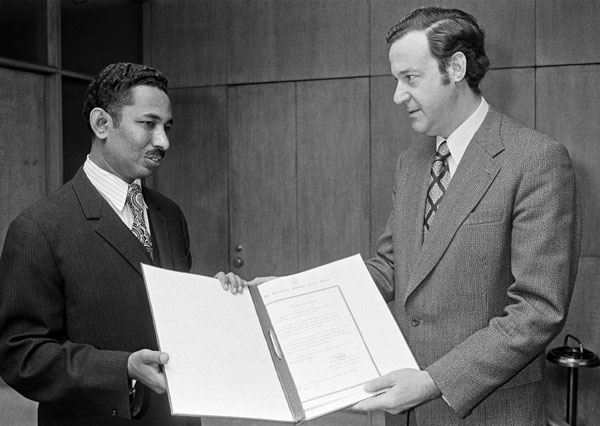Convention relating to the Status of Refugees
- Parties to the 1951 Convention
- Parties to the 1967 Protocol
- Parties to both treaties
- Parties, none of the two contracts
The Geneva Convention (abbreviation GRP; actually " Convention relating to the Status of Refugees " ) was adopted on 28 July 1951 at a UN Special Session in Geneva and entered into force on 22 April 1954. It was supplemented on 31 January 1967 by the " Protocol on the Status of Refugees ", which entered into force on 4 October 1967. Have joined the Convention 145 states, the Protocol 146 143 States are both the Convention and the Protocol signatories. (As of January 25, 2014 )
The GRP is the legal basis for the Office of the High Commissioner for Refugees (UNHCR ).
Before the entry into force of the CSF, there had been no legally binding regime for dealing with refugees. Only in intergovernmental agreements or unilateral declarations of intent of individual states had been established, a state wanted to record each in a particular case how many refugees. The humanitarian emergencies associated had been recognized as a problem since the First World War. After the Nazis had come to power in Germany, the situation worsened. 1938 there was at the instigation of the U.S., a conference in Evian, France, which was to set record quotas for fleeing Jews from Germany. This conference was without result, and showed that refugee issues with intergovernmental agreements could not be solved. In the following decades, the idea of an international convention spread, the refugees should grant personal rights. These considerations led to the GRP.
Content of the 1951 Convention
Refugees under the Convention are defined as persons who stay due to a well-founded fear of persecution outside of the State whose nationality they hold, as well as stateless persons who therefore are outside of their habitual residence.
Recognised refugees are those who are persecuted because:
- "Race"
- Religion
- Nationality
- Membership of a particular social group
- Political conviction
The aim of the Convention is a very uniform legal status for people who enjoy no diplomatic protection of their home country more. However, the Convention contains a temporal limitation: So it refers only to persons who ( Article 1 A No. 2) became refugees " as a result of events occurring before 1 January 1951 ". So that it contains no provisions for the rights of refugees later.
The convention leads, inter alia, the following rights of a refugee on:
- Protection against discrimination based on race, religion or country of origin ( Art. 3)
- Freedom of religion ( Article 4) - in which case only the so-called principle of national treatment applies, that is, refugees and citizens are equal in their religion; Restrictions on citizens may then also apply to refugees.
- Free access to the courts (Article 16)
- Issue of a travel document for refugees ( Art. 28)
- Impunity of illegal entry unless the fugitive immediately reported to the authorities (Article 31, paragraph 1)
- Protection against expulsion (Article 33, the non-refoulement principle - the principle of non-refoulement )
- Overall, the Parties shall grant a refugee largely the same rights as aliens generally; a refugee must therefore not be treated as " foreigners 2nd class ".
Along with article 31, paragraph 1, the principle of non- refoulement under Article 33, paragraph 1 central part of the Agreement. According to this principle may be a refugee can not " expel or reject, in which his life or freedom would be threatened in a particular social group or political opinion because of his race, religion, nationality, membership in any manner whatsoever to the frontiers of territories ". It must not be rejected in a country going without his refugee status has been clarified previously.
The Convention allows States Parties to submit reservations on the most items. This is intended to ensure that a State which refuses a single, possibly incidental regulation of the Convention may accede to her anyway and can therefore binding confess to the other schemes.
In April 1954, the Convention entered into force. The Federal Republic of Germany was among the first six signatories.
The Protocol on the Status of Refugees, 1967
Main criticism of the convention was her time restriction on reasons for flight, which occurred before 1951. Also, States Parties could limit itself only European refugees should be given the appropriate rights. The Protocol Relating to the Status of Refugees any temporal and spatial restriction has been lifted. The Geneva Convention now applies to States that have ratified both the Convention and the Protocol, without restriction to all refugees. Also the possibility to make reservations against individual articles of the Convention contends was reduced.
Interpretation of a " social group"
With regard to the membership of a social group called the Convention does not explicitly gender. More recently, especially since the publication of appropriate UNHCR Guidelines in 2002, the Geneva Convention is designed so that it extends to gender-based persecution.
Problem
Views differed on the question whether the Geneva Convention applies to extraterritorial areas - such as on the high seas and in the transit areas of airports. The German federal government expressed in this regard in 2006 considered that " according to overwhelming state practice " that defined in the GRP principle of non-refoulement " only in territorial area of contact, ie at the border and within the country " was to be applied; later she added explanatory: " The applicability of the Geneva Convention and outside the territory of the Contracting States is controversial. "
For Europe, the question of the validity of the GRP on the high seas is of particular importance given the number of refugees are trying to reach across the Mediterranean to Europe and many of them perish on the journey.









